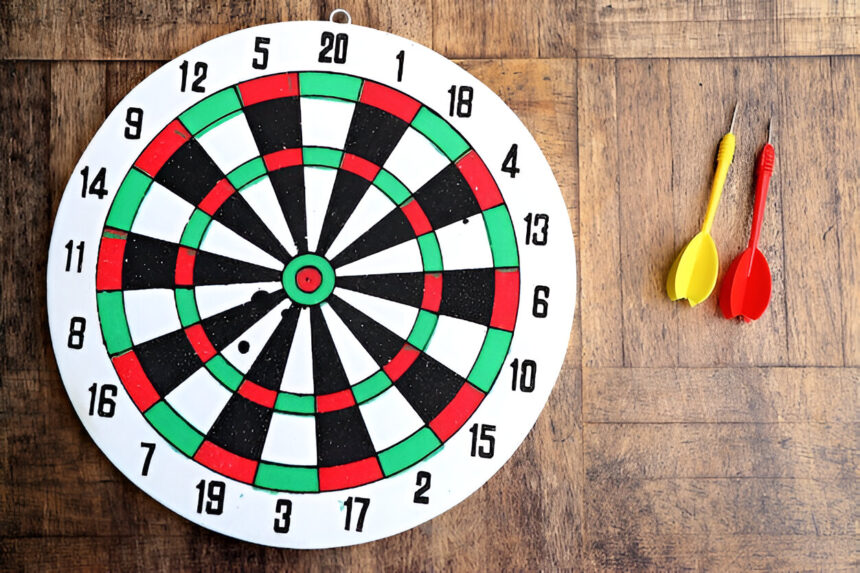Dart boards have been a beloved pastime for centuries, providing entertainment and competition for players of all ages and skill levels. Whether you’re a casual player looking to relax with friends or a serious competitor aiming for precision and skill, the dart board is a versatile game that offers a range of benefits beyond just fun. In this comprehensive guide, we will explore the history, types of dart boards, rules of the game, tips for improving your skills, and the growing popularity of darts as a sport.
History of Dart Boards
The origins of darts can be traced back to medieval England, where soldiers would throw short arrows at the bottom of a wine cask. As the game evolved, the design of the dart board also changed, with different materials and configurations being used. The standard design we are most familiar with today, known as the “clock dart board,” features the numbers 1 to 20 arranged in a circular pattern, with a bullseye at the center.
Types of Dart Boards
- Bristle Dart Boards: Bristle boards are the most common type of dart board used in professional competitions. They are made from sisal fibers compressed together, allowing the darts to stick in the board without causing excessive damage. Bristle boards are durable and self-healing, making them a popular choice for serious players.
- Electronic Dart Boards: Electronic boards have gained popularity in recent years due to their advanced features and interactive gameplay. These boards use sensors to detect where the darts land, scoring automatically and providing a range of game options and statistics. Electronic boards are perfect for players who enjoy modern technology and want to track their progress.
- Magnetic Dart Boards: Magnetic boards are a safe and fun option for children or beginners learning the game. The darts have small magnets in their tips, allowing them to stick to the board without causing any damage to walls or surfaces. While magnetic boards lack the authentic feel of traditional dart boards, they are a great choice for casual play.
Rules of the Game
Darts is a game of skill, strategy, and precision. The standard game of darts is usually played with two players or two teams taking turns to throw three darts each. The objective is to score points by hitting specific areas on the board, with the bullseye offering the highest score. Here are some basic rules to get you started:
- The board is divided into numbered sections, with different values assigned to each segment. Hitting the thin outer ring doubles the score, while hitting the thin inner ring triples the score.
- The bullseye is divided into two parts: the outer bullseye (worth 25 points) and the inner bullseye (worth 50 points).
- Players take turns throwing three darts each, aiming to reach a specific score or reduce their total to zero.
- The game typically ends with a double, meaning players must hit a double segment to win.
Tips for Improving Your Skills
- Practice Regularly: Consistent practice is key to improving your dart skills. Set aside time each week to play and focus on different techniques, such as accuracy, speed, and strategy.
- Work on Your Aim: Mastering your aim is crucial in darts. Focus on a specific target on the board and practice hitting it consistently to improve your accuracy.
- Find Your Rhythm: Developing a smooth throwing motion and finding your rhythm can help you throw more consistently and with greater control.
- Stay Relaxed: Tension in your body can affect your throw. Stay relaxed and maintain a comfortable grip on the dart to improve your performance.
Darts as a Growing Sport
In recent years, darts has experienced a surge in popularity, with professional players competing in high-stakes tournaments and leagues around the world. The game has evolved from a pub pastime to a competitive sport with dedicated fans and sponsors. With televised events, lucrative prize money, and a growing number of participants, darts has become a global phenomenon that attracts players of all levels.
Conclusion
Dart boards offer a timeless form of entertainment that combines skill, strategy, and fun. Whether you’re playing casually with friends or aiming for the bullseye in a competitive match, darts provides a rewarding and engaging experience for players of all ages. By understanding the history, types of dart boards, rules of the game, and tips for improvement, you can enhance your skills and deepen your appreciation for this classic game. So, pick up your darts, aim carefully, and let the game begin!





